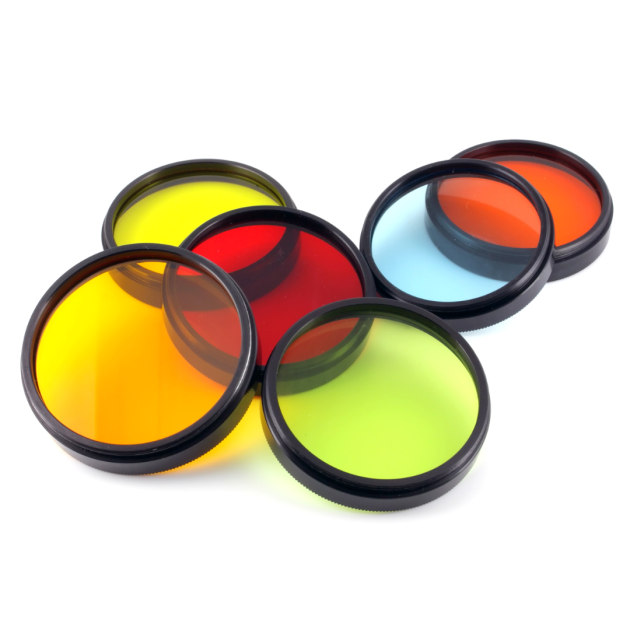The Importance of Eye Tests for Children: Early Detection and Prevention
Apr 14, 2023 in Children's Eye Care

Why are eye tests important for children?
Eye tests are just as important for children as they are for adults, if not more so..
Under the NHS, under 16s are entitled to a free eye test every one to two years (or sooner if there is a change in vision that needs addressing). Typically most children will attend their first eye test around the age of 3, but eye tests are available for children of all ages, and should an issue be spotted we would advise you to bring them in.
For young children, an eye examination can be lots of fun. They involve using 3D images, colourful lights and matching pictures and letters which are treated like games.
But just why are eye tests so important for children? Well, let us tell you.
Early detection of vision problems
Kids are not often aware of what is and what is not normal for their vision and are often unable to tell us when something is not quite right, making it harder for us parents and guardians to pick up on any issues they may be facing. This is where eye examinations play a vital role.
During an eye test at Leightons, we examine the eyes in a number of ways to check for things such as difficulties in eye movements and coordination, focusing, clarity of vision, and eye health. These tests allow us to identify any vision problems your child may have. The earlier these issues are spotted, the sooner we can act on them.
At Leightons, we don’t stop at standard, we offer our Ultimate Eye Examination to patients of all ages. This enhanced examination allows us to see more than ever before with 2D and 3D imaging. For children under 16 and NHS patients, the UEE is just £15.
Prevention

Should we pick up on anything during your child's eye test that needs addressing, we will take the necessary steps to improve their vision or prevent certain conditions from further developing.
For children, technology is really advancing, and amazingly there are now glasses and contact lenses that not only improve their vision but act more as a treatment, reducing the rate at which their eyesight gets worse as they age.
What are common children’s eye conditions?
Now you know the importance of children’s eye exams, let us delve a little deeper into some common eye conditions our kids can experience.
Astigmatism
Astigmatism describes a type of irregular focusing of the eye. Most astigmatisms occur as a result of the front of the eye not being evenly curved across its surface. This can sometimes be compared to the way a rugby ball is more rounded in one direction than the other, while a football has even curves in all directions.
Most people will have astigmatism without realising it, but this is often a small amount. Astigmatisms can be managed successfully with glasses and contact lenses.
Long-sightedness (hyperopia)
Long-sightedness is an eye condition where the natural focus of the eye is behind the retina instead of on it, making it harder to see things up close. This can occur when the front surface of the eye is too flat or the eye is shorter than average.
Young people can adjust their focus to see things both far and near (by using their ciliary muscle and crystalline lens), but this ability decreases as they age and in some cases can develop into eye turns or squints if it's not corrected.
During an eye exam, the optometrist will do a number of tests to check not only for the presence of long-sightedness, but the child's ability to adapt to it. Long-sightedness can be managed using glasses and contact lenses.
Short-sightedness (myopia)
Myopia, or short-sightedness as it is more commonly known, is an eye condition where the natural focus of the eye is in front of the retina instead of on it, which makes it hard to see things far away. This happens because the front surface of the eye is too curved, the eye has dense structures within it, or the eye keeps growing beyond the point where it should stop for good focus.

Children with short-sightedness often have trouble seeing things far away but can see things up close easily, sometimes better than those who do not need glasses.
Though the exact cause of short-sightedness is not fully known, there is a lot of ongoing research into the causes of it and methods of management. Here at Leightons, we offer a full range of evidence-based myopia management options which you can find out all about here.
Lazy Eye
Children's vision develops during the first 8-12 years of their life. Sometimes an anomaly such as an eye turn or focusing issue can interrupt this and their vision may not develop normally, resulting in one eye having worse vision than the other, even with glasses.
If a lazy eye is left untreated, it can result in a loss of 3D vision and increase the risk of sight loss later in life. It is important that when a lazy eye is identified, it is treated promptly in order to normalise vision, with the best results occurring if treatment is started before the age of 8.
All optometrists are trained to detect and manage lazy eye, but treatment is usually done in a hospital eye department by an Orthoptist. The first step in treatment is getting an accurate prescription for glasses or contact lenses, which the optometrist will advise you about along with the likely treatment plan.
Colour Deficiency (colourblindness)
Colour deficiency is a common condition that affects about 1 in 12 boys and 1 in 200 girls. Contrary to popular belief, most people with colour vision deficiency are able to see a significant range of colours, but their sensitivity to certain colours is reduced compared to people with normal colour vision. This means that some colours can appear more washed out than others.
Colour vision deficiency is typically inherited and currently, there is no cure or treatment for it, although experimental glasses and contact lenses have been tried. It is important to detect colour vision deficiency in young people as it can have a significant impact on their future aspirations.
Visual Stress

Visual stress is a term used to describe a number of unusual symptoms that can happen when looking at patterns, these can be linked to specific learning difficulties like dyslexia. These symptoms can be improved or even go away completely when using coloured overlays or filters.
At Leightons, we are able to test for visual stress, and if identified, can offer options on overlays and even specialist-prescribed colour spectacles to make reading easier.
What options are available if a visual anomaly is found?
Our Optometrists can provide a whole range of support to those children with visual anomalies. This includes:
- Prescription glasses and sunglasses
- Contact lenses
- Myopia management
For those children who require glasses, the NHS can also provide support towards the cost. For more information please click here.
What should I do if I notice an issue with my child's vision?
Whilst our kids might not be able to communicate their issues to us, there are a few symptoms to look out for that could indicate an issue with their vision, these include:
- Complaining about the difficulty in seeing
- Eye turns in/out/up/down
- Rubbing of eyes
- Avoiding near tasks
- Covering one eye during reading
- Complains of seeing double
- Unexplained headaches
- Sitting close to the TV
- Holding objects close to their face
Should you notice any of these or have any other concerns about your child's vision, the best thing you can do is bring them in for an eye exam. Our team of expert Optometrists are ready and waiting to help your child.
To book a Leightons eye exam or our Ultimate Eye Examination, you can call our Dedicated Patient Support Team on 0800 40 20 20 or you can book online via the button below.

